
Earth Science Informatics
Scope & Guideline
Connecting Researchers to Propel Earth Science Innovations.
Introduction
Aims and Scopes
- Data-Driven Approaches in Earth Sciences:
The journal emphasizes the use of data-driven methodologies, including machine learning, artificial intelligence, and statistical modeling, to analyze and interpret complex geological and environmental data. - Remote Sensing and GIS Applications:
A core focus on utilizing remote sensing technologies and Geographic Information Systems (GIS) for environmental monitoring, land use classification, and natural resource management. - Integration of Multi-Scale Data:
Research often involves synthesizing data from various scales and sources, including satellite imagery, in-situ measurements, and geological surveys to improve predictive modeling and analysis. - Natural Disaster Assessment and Management:
The journal covers topics related to the assessment and management of natural disasters, including landslide susceptibility, flood forecasting, and earthquake impact analysis, often utilizing machine learning techniques. - Sustainable Resource Management:
Research on sustainable practices in natural resource management, including water resources, soil management, and mineral exploration, is a significant theme. - Innovative Computational Techniques:
A commitment to showcasing innovative computational techniques, including deep learning architectures and hybrid models, to tackle traditional and emerging challenges in the earth sciences.
Trending and Emerging
- Machine Learning and AI in Earth Sciences:
An increasing number of papers explore the application of machine learning and artificial intelligence for predictive modeling, resource estimation, and environmental monitoring, showcasing the transformative potential of these technologies. - Big Data Analytics in Geosciences:
The integration of big data analytics to process and analyze large datasets from various sources, including satellite imagery and sensor networks, is becoming a focal point in geoscientific research. - Climate Change Impact Assessment:
Research related to the assessment of climate change impacts on various environmental factors, such as water resources, soil health, and biodiversity, is gaining prominence, reflecting global concerns. - Geospatial Data Integration:
There is a growing trend towards integrating diverse geospatial datasets for enhanced analysis and decision-making, particularly in urban planning and disaster management. - Real-Time Monitoring and Forecasting:
The development of real-time monitoring systems and forecasting models using advanced computational techniques is increasingly being highlighted, especially for natural disaster prediction and environmental changes. - Remote Sensing Innovations:
Innovative methodologies in remote sensing, including improved algorithms for image processing and analysis, are being actively researched, indicating a shift towards more efficient and accurate geospatial assessments.
Declining or Waning
- Traditional Geophysical Surveys:
There has been a noticeable decrease in studies solely focused on conventional geophysical survey methods, such as seismic reflection and refraction techniques, as data-driven approaches gain traction. - Basic Statistical Methods:
The reliance on basic statistical methods without the integration of advanced computational techniques is less prevalent, indicating a shift towards more complex modeling approaches. - Physical Geography Studies:
Research strictly confined to physical geography without the integration of technology or data science appears to be waning, reflecting a broader trend towards interdisciplinary approaches. - Manual Mapping Techniques:
Manual techniques for mapping and analysis are being replaced by automated processes utilizing machine learning and remote sensing, leading to a reduction in papers focusing on traditional manual methodologies.
Similar Journals

PHYSICS AND CHEMISTRY OF THE EARTH
Unveiling Earth's Secrets: Where Physics Meets ChemistryThe Physics and Chemistry of the Earth is a premier interdisciplinary journal published by Pergamon-Elsevier Science Ltd, dedicated to advancing the understanding of Earth sciences through the integration of geophysical and geochemical perspectives. With an ISSN of 1474-7065 and an E-ISSN of 1873-5193, the journal serves as a critical platform for researchers and professionals to disseminate key findings and innovative methodologies in the realms of geophysics and petrology. As of 2023, it proudly holds a Q2 ranking in both Geochemistry and Petrology and Geophysics, reflecting its robust impact in the scientific community, with Scopus rankings that position it in the top 20% and 32% of its respective categories. Notably, the journal is available in an open-access format, allowing for greater dissemination and accessibility of research contributions. With a publication history spanning from 1992 to 2024, Physics and Chemistry of the Earth stands as a vital resource for ongoing research and discovery in the Earth sciences, making it an essential read for academics and practitioners alike.
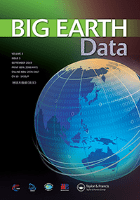
Big Earth Data
Shaping Tomorrow's Earth Science with Cutting-Edge Data AnalyticsBig Earth Data is a prestigious open-access journal that has been at the forefront of advancing research in the intersection of earth science and computer technology since its inception in 2017. Published by TAYLOR & FRANCIS LTD in the United Kingdom, this journal is dedicated to disseminating groundbreaking findings and innovative methodologies in the fields of Earth and Planetary Sciences and Computer Science Applications. With a commendable impact factor and an impressive positioning in the Scopus rankings—claiming Q1 status in Computers in Earth Sciences and Q2 in Computer Science Applications—it serves as a vital resource for researchers, professionals, and students alike. The journal encourages submissions that explore the integration of big data technologies in managing, analyzing, and visualizing earth-related data, thereby fostering interdisciplinary collaboration. Since embracing its open-access model, Big Earth Data has enhanced the accessibility of high-quality research, promoting a broader dialogue in the scientific community and contributing to informed decision-making in global environmental challenges.

Geomatik
Unleashing the potential of geospatial technologies.Geomatik is a pioneering open-access journal dedicated to advancing the field of geomatics, encompassing disciplines such as geospatial data analysis, remote sensing, and geographic information systems. Founded in 2016 by the esteemed Geomatik Journal publisher, this peer-reviewed platform aims to disseminate high-quality research and innovative methodologies to a global audience. With its E-ISSN 2564-6761, Geomatik facilitates accessibility to cutting-edge studies that address vital challenges in environment monitoring, urban planning, and spatial data management. The journal not only encourages collaboration among researchers and practitioners but also serves as an essential resource for students seeking to deepen their understanding of geomatic sciences. Its commitment to open access fosters scholarly exchange and enhances visibility for authors, contributing to significant advancements within the geomatics community.

ISPRS International Journal of Geo-Information
Empowering knowledge through open access geospatial research.ISPRS International Journal of Geo-Information, published by MDPI, stands at the forefront of the field of geospatial sciences, contributing valuable knowledge and research insights since its inception in 2012. This open access journal, which boasts an impressive collection of articles that emphasize the integration of geographic information systems (GIS) in Earth and planetary sciences, currently achieves a remarkable standing, with a 2023 impact factor ranking in the Q1 category for both Earth and Planetary Sciences and Geography, Planning and Development. Researchers and professionals engaged in the study of spatial data, remote sensing, and innovative geoinformation technologies will find the journal an essential resource, offering diverse perspectives and methodologies. With its open access model, the journal aims to promote the dissemination of knowledge globally, fostering collaboration among scholars while pushing the boundaries of research in geoinformation disciplines. The journal is based in Switzerland and is well-positioned to contribute significantly to the understanding and application of geospatial data for societal advancements.
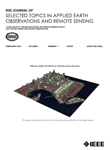
IEEE Journal of Selected Topics in Applied Earth Observations and Remote Sensing
Empowering Scholars with Cutting-edge Earth Observation Research.IEEE Journal of Selected Topics in Applied Earth Observations and Remote Sensing is a premier peer-reviewed journal published by the IEEE-INST ELECTRICAL ELECTRONICS ENGINEERS INC, focused on advancing the field of Earth observation and remote sensing technologies. With an impressive impact factor, this journal ranks in the top quartile (Q1) for both Atmospheric Science and Computers in Earth Sciences, underscoring its significance and influence in the academic community. Open access since 2020, it facilitates broader dissemination of research findings to enhance global visibility and accessibility for researchers, professionals, and students alike. Spanning the years from 2008 to 2024, the journal covers a myriad of topics that highlight innovative applications of remote sensing data and technologies in addressing environmental challenges. With a Scopus ranking placing it in the 91st and 89th percentiles, respectively, in its categories, the journal serves as a vital resource for advancing scholarly discourse and collaboration in Earth sciences.

Remote Sensing
Bridging Earth Science and Technology for a Sustainable FutureRemote Sensing is a highly esteemed journal published by MDPI, dedicated to the domain of Earth and Planetary Sciences. With an impressive impact factor reflected in its rank of #16 out of 195 in the general Earth and Planetary Sciences category, this journal achieves a commendable 92nd percentile among its peers, indicating its significant contribution to the field. Since its inception in 2009 as an Open Access journal, it has enabled researchers, professionals, and students from around the globe to access high-quality, peer-reviewed articles that delve into the latest advancements in remote sensing technologies, methodologies, and applications. Based in Switzerland, Remote Sensing serves as a vital platform for disseminating innovative research that supports and enhances our understanding of Earth's processes and environments, ensuring scientific knowledge remains freely accessible and impactful.
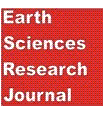
Earth Sciences Research Journal
Unveiling Insights into Earth’s MysteriesThe Earth Sciences Research Journal, published by the UNIV NACIONAL DE COLOMBIA, serves as a pivotal platform for the dissemination of knowledge in the diverse field of Earth and Planetary Sciences since its inception. With an ISSN of 1794-6190 and an E-ISSN of 2339-3459, this Open Access journal has been committed to providing unrestricted access to high-quality research since 2004. Located in Bogotá, Colombia, it has gained recognition within the academic community, achieving a Q3 quartile ranking in Earth and Planetary Sciences and notable Scopus rankings, which further underscores its relevance and reach. Its scope encompasses varied research topics, making it an essential resource for researchers, professionals, and students alike, seeking to contribute to or stay informed on the latest developments in the Earth sciences up to the year 2024. The journal not only anticipates cutting-edge research but also emphasizes collaborative dialogues among global experts, driving forward the conversation on critical issues facing our planet.
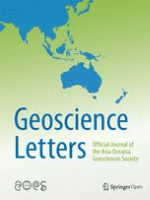
Geoscience Letters
Elevating Geoscience Research to New HeightsGeoscience Letters, published by Springer, is a prominent open-access journal in the field of Earth and Planetary Sciences, recognized for its dedication to advancing knowledge and research in this vital area of study. With a reported impact factor that reflects its esteemed position—ranking in the Q1 quartile of Earth and Planetary Sciences, particularly as the journal ranks #48 out of 195 in the general category according to Scopus—the journal serves as a vital resource for researchers, professionals, and students. Since its inception in 2014, Geoscience Letters has facilitated the dissemination of high-quality research and critical insights, aiming to bridge the gap between scientific discovery and societal needs. Its commitment to open access ensures that the latest findings are readily available to a global audience, thus enhancing collaboration and innovation within the geosciences community.
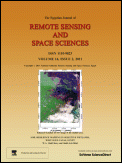
Egyptian Journal of Remote Sensing and Space Sciences
Leading the Way in Cutting-edge Space Science ResearchThe Egyptian Journal of Remote Sensing and Space Sciences, published by Elsevier, is a premier open-access journal dedicated to advancing the fields of Remote Sensing and Space Sciences. Since its inception, the journal has gained a prominent reputation, currently holding a prestigious Q1 ranking in Earth and Planetary Sciences and placing within the top 10% of its field according to Scopus metrics. With an ISSN of 1110-9823 and an E-ISSN of 2090-2476, the journal features a diverse range of scholarly articles that explore both theoretical and practical aspects of remote sensing technologies and space science innovations, thus appealing to researchers, professionals, and students alike. Established in 2003 and fully transitioning to an open-access model in 2010, the journal aims to disseminate knowledge and foster collaboration across the globe by providing wider accessibility to groundbreaking research findings. Its commitment to quality and innovation is a catalyst for intellectual development in these dynamic and evolving disciplines.

SURVEY REVIEW
Illuminating Complex Challenges in Civil and Structural EngineeringSURVEY REVIEW is a distinguished journal published by Taylor & Francis Ltd, focusing on a diverse range of disciplines including Civil and Structural Engineering, Computers in Earth Sciences, and Earth and Planetary Sciences. With an ISSN of 0039-6265 and an E-ISSN of 1752-2706, this journal has been a vital resource for scholarly communication since its inception in 1963. Positioned within the Q2 and Q3 quartile categories according to the latest rankings, it is recognized for its significant contributions to advancing knowledge in multiple fields, specifically holding a rank of 64/159 in Earth and Planetary Sciences and 32/73 in Computers in Earth Sciences. Researchers, professionals, and students benefit from its critical insights into complex engineering and scientific challenges. Although SURVEY REVIEW is not open access, it remains a highly cited journal, making it an essential avenue for disseminating pivotal findings that impact both academia and industry practices.